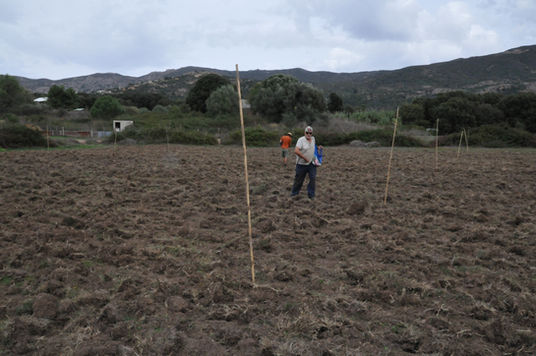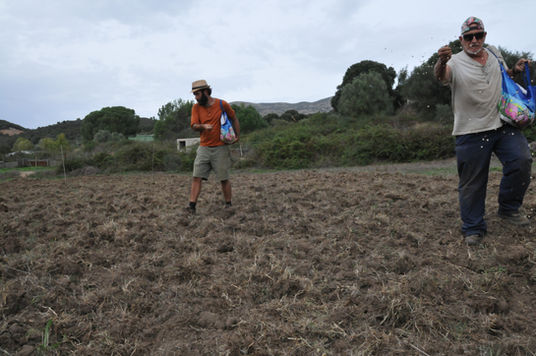
LUPINE SEED PRODUCTION TO REGENERATE SOILS
Treasure for soil regeneration and livestock feed
Le Lupine: A little history ...
Lupine fell into oblivion in Europe until the 1929 crisis.
To free themselves from their dependence on imported cakes, the Germans did research on plants rich in proteins, lupine was selected for its best yield on the condition, however, of obtaining varieties poor in alkaloids.
Professor Sengbush from the Kaiser Wilhem Institute in Muncheberg succeeded in obtaining 7 low-bitter lupins, the cultivation of which grew rapidly. Seven years later, in 1938, 78,000 ha were seeded.
Then came the war, and lupine, like other legumes, declined in Western Europe but not in Eastern Europe which continued this cultivation in Hungary, Poland and the USSR.


An asset for food independence
Lupine , Olympic gold medal for capturing nitrogen from the air and synthesizing it in the soil, represents a serious hope for poor countries, making it possible to develop acidic soils where practically nothing grows.
It naturally enriches poor soils, improves their structure and is a very good crop precedent. A culture of lupine can provide in degraded, skeletal, acidic soil, up to 300 kg of natural nitrogen, plus 100 kg of natural phosphate extracted from the soil and made assimilable, and 80 kg of potash per ha and per year.
Sown after a cereal harvest as green fodder, it can be consumed directly by the animals in the field, thus limiting the needs for summer silage and / or harvests of green fodder.
Test space ....
With our partner Philippe Desbrosses, we carried out production tests on several varieties.
Objective of this approach:
Choose the varieties most suited to the region's climate.
Test the regeneration potential of the soil.
Start production over several years and produce lupine for the autonomy of the farm.
Integrate green manures in orchards.
Stages of implantation
PREPARE A COLLECTIVE OR AGRICULTURAL MACHINERY
Prepare the site
Gather humans.
Prepare the seeds.
Prepare the space to be sown.
PREPARE A TEST AREA FOR 8 LUPINE VARIETIES
Establishment
Prepare the ground.
Sow.
Water and maintain (protect from rabbits!).
CULTIVATION OF SEEDS
Prepare the workshop Extraction and packaging of seeds
Prepare the extraction area (flat and clean).
Bags.
Patience...
SEED HARVEST
Seed collection
Prepare the participatory worksite.
The equipment (bags, wheelbarrows, mini-scythes).
HARVESTING LUPINE SEEDS
Setting up the Workshop
Harvesting seeds.
Biomass mowing and soil cover.
Seed conditioning.
REGENERATING AN ORCHARD WITH GREEN FERTILIZER
Installation of green manures
Broadcast green manure.
Creation of biomass.
Land cover and soil regeneration.
Do you want to carry out this type of project?
Training is available:
Landscape reading training
Anti erosion system training
Food production training



.png)





























































